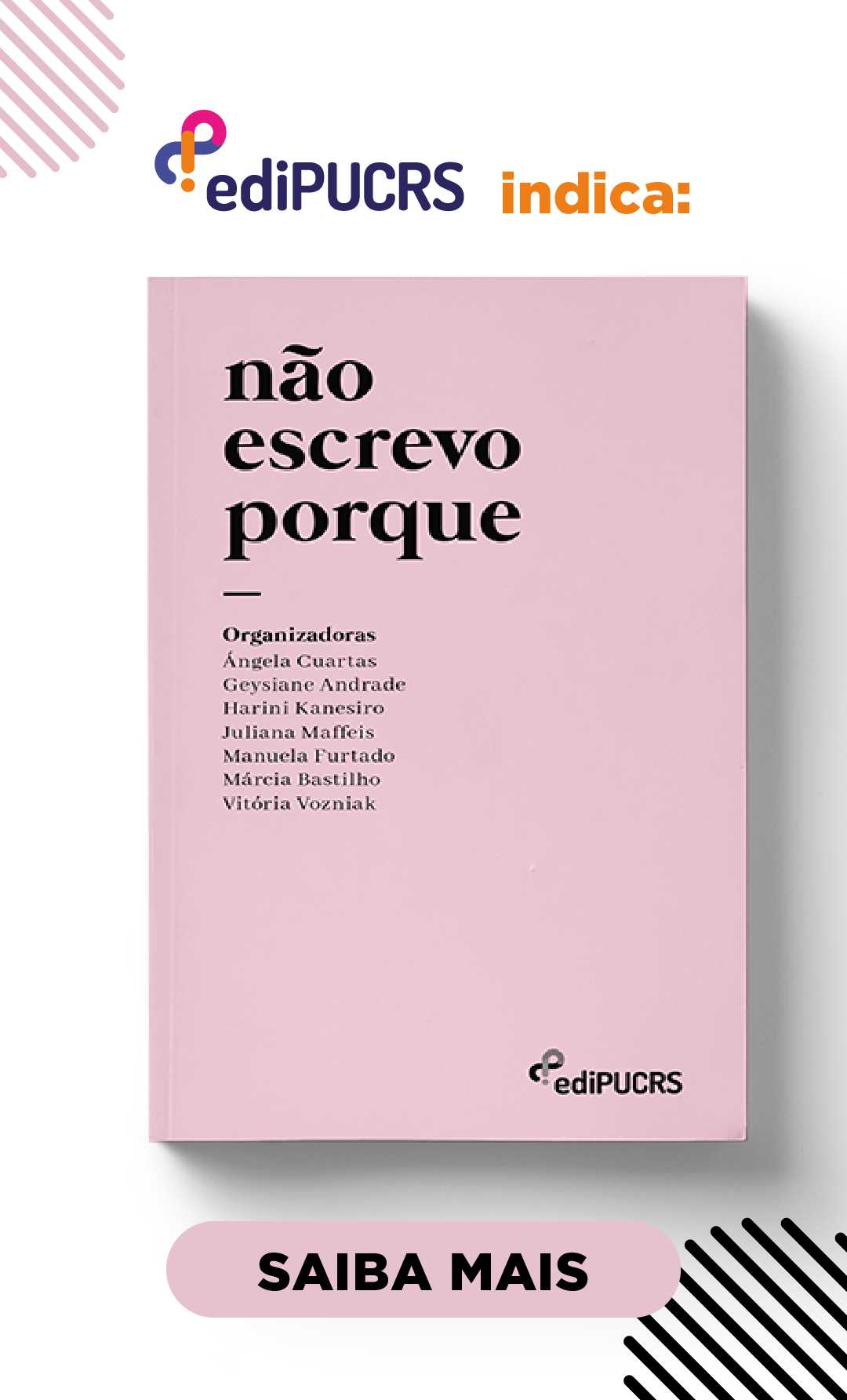Percepción subjetiva del tiempo de palabras com contenido emocional
DOI:
https://doi.org/10.15448/1984-4301.2023.1.44333Palabras clave:
Percepción del tiempo, Emoción, Valencia, Excitación Fisiológica, Procesamiento de Palabra.Resumen
El estudio tuvo como objetivo analizar la percepción subjetiva del tiempo de palabras con contenido emocional. Para ello, 63 participantes realizaron una tarea de bisección temporal con sustantivos de valencia emocional: neutra (baja excitación); positivas (baja excitación), divididas en emociones básicas (Alegría) y sociales (Gratitud); y negativas (alta excitación), divididas em emociones básicas (Ira) y sociales (Vergüenza). Las funciones psicométricas se obtuvieron a partir de juicios temporales y se calculó el punto de bisección. Los resultados revelaron una sobreestimación temporal en todas las condiciones, pero no se encontraron diferencias estadísticamente signifi cativas entre ellas, a excepción de una mayor distorsión temporal para las palabras del grupo Ira em comparación con las palabras del grupo Vergüenza. Estos hallazgos corroboran estudios previos sobre la percepción del tiempo com palabras como estímulos emocionales y mostraron apoyo al modelo bottom-up/top-down. Por lo tanto, este estudio proporciona conocimientos teóricos y metodológicos para comprender los mecanismos que subyacen al procesamiento de las palabras emocionales y de la percepción del tiempo.
Descargas
Citas
BERNARDINO, Leonardo Gomes; OLIVEIRA, Felipe Santos de; MORAES JÚNIOR, Rui de. O papel da emoção na percepção de tempo: uma revisão sistemática do estado da arte. Revista Psicologia em Pesquisa, Juiz de Fora, v. 14, n. 3, p. 206-230, 2020. http://dx.doi.org/10.34019/1982-1247.2020.v14.30383
BRADLEY, Margaret M.; LANG, Peter J. Measuring emotion: the self-assessment manikin and the semantic differential. Journal of Behavior Therapy and Experimental Psychiatry, [s.l.], v. 25, n. 1, p. 49-59, 1994. https://doi.org/10.1016/0005-7916(94)90063-9
BUHUSI, Catalin V.; MECK, Warren H. What makes us tick? Functional and neural mechanisms of interval timing. Nature Reviews Neuroscience, [s.l.]v. 6, p. 755- 765, 2005. https://doi.org/10.1038/nrn1764
CANÇADO, Márcia. Análise descritiva dos verbos psicológicos do português brasileiro. Revista de Estudos da Linguagem, Belo Horizonte, v. 4, n. 1, p. 89-114, 1996. http://dx.doi.org/10.17851/2237-2083.4.1.89-114
CANÇADO, Márcia. Verbos Psicológicos: uma classe relevante gramaticalmente? Veredas: Revista de Estudos Linguísticos, [s.l.], v. 16, n. 2, p. 1-18, 2012. Disponível em: https://periodicos.ufjf.br/index.php/veredas/article/view/25023. Acesso em: 22 set. 2023.
CITRON, Francesca M. M. Neural correlates of written emotion word processing: a review of recent electrophysiological and hemodynamic neuroimaging studies. Brain and Language, [s.l.], v. 122, n. 3, p. 211-226, 2012. https://doi.org/10.1016/j.bandl.2011.12.007
CORRÊA, Letícia Maria Sicuro. Língua e cognição: antes e depois da revolução cognitiva. In: PFEIFFER, Cláudia; NUNES, José Horta (org.) Introdução às ciências da linguagem: linguagem, história e conhecimento. São Paulo: Pontes Editores, 2006. p. 103-139.
CUI, Xiaobing et al. The role of valence, arousal, stimulus type, and temporal paradigm in the effect of emotion on time perception: A meta-analysis. Psychonomic Bulletin & Review, [s.l.], v. 30, n. 1, p. 1-21, 2023. https://doi.org/10.3758/s13423-022-02148-3
DAMÁSIO, António Rosa. A estranha ordem das coisas: as origens biológicas dos sentimentos e da cultura. São Paulo: Companhia das Letras, 2018.
DROIT-VOLET, Sylvie; MECK, Warren H. How emotions colour our perception of time. Trends in Cognitive Sciences, [s.l.], v. 11, n. 12, p. 504-513, 2007. https://doi.org/10.1016/j.tics.2007.09.008
ESTIVALET, Gustavo L.; MEUNIER, Fanny. The Brazilian Portuguese Lexicon: An Instrument for Psycholinguistic Research. PloS ONE, [s.l.], v. 10, n. 12, e0144016, 2015. https://doi.org/10.1371/journal.pone.0144016
FAYOLLE, Sophie; GIL, Sandrine; DROIT-VOLET, Sylvie. Fear and time: Fear speeds up the internal clock. Behavioural Processes, [s.l.], v. 120, p. 135-140, 2015. https://doi.org/10.1016/j.beproc.2015.09.014
FIGSHARE. The Self-Assessment Manikin (SAM), adapted with permission from Bradley and Lang 1994. 2016. Disponível em: https://figshare.com/articles/figure/The_Self_Assessment_Manikin_SAM_adapted_with-_permission_from_Bradley_and_Lang_1994_6_/2596591/1. Acesso em: 5 out. 2023.
FOOLEN, Ad. A relevância da emoção para a linguagem e para a Linguística. In: CAVALCANTE, Sandra; MILITÃO, Josiane (org.). Emoções: desafios para estudos da linguagem e cognição. Belo Horizonte: PUC Minas, 2016. p. 13-39.
GESCHEIDER, George A. Psychophysics: the fundamentals. 3. ed. New Jersey: LEA, 1997.
GIBBON, John; CHURCH, Russell M.; MECK, Warren H. Scalar timing in memory. Annals of the New York Academy of Sciences, [s.l.], v. 423, n. 1, p. 52-77, 1984. https://doi.org/10.1111/j.1749-6632.1984.tb23417.x
HARMON-JONES, Eddie. On motivational influences, moving beyond valence, and integrating dimensional and discrete views of emotion. Cognition & Emotion, [s.l.], v. 33, n. 1, p. 101-108, 2019. https://doi.org/10.1080/02699931.2018.1514293
JOHNSON, Laura W.; MACKAY, Donald G. Relations between emotion, memory encoding, and time perception. Cognition and Emotion, [s.l.], v. 33, n. 2, p. 185-196, 2019. https://doi.org/10.1080/02699931.2018.1435506
JOSEPH, Dana L.; CHAN, Michaela Y.; HEINTZELMAN, Samantha J.; TAY, Louis; DIENER, Ed; SCOTNEY, Victoria S. The manipulation of affect: A meta-analysis of affect induction procedures. Psychological Bulletin, [s.l.], v. 146, n. 4, p. 355-375, 2020. https://doi.org/10.1037/bul0000224
KAGAN, Jerome. What is emotion?: History, measures, and meanings. New Haven; London: Yale University Press, 2007.
KAZANAS, Stephanie A.; ALTARRIBA, Jeanette. The automatic activation of emotion and emotion-laden words: Evidence from a masked and unmasked priming paradigm. The American Journal of Psychology, [s.l.], v. 128, n. 3, p. 323-336, 2015. https://doi.org/10.5406/amerjpsyc.128.3.0323
KOUSTA, Stavroula-Thaleia; VIGLIOCCO, Gabriella; VINSON, David P.; ANDREWS, Mark; DEL CAMPO, Elena. The representation of abstract words: Why emotion matters. Journal of Experimental Psychology: General, [s.l.], v. 140, n. 1, p. 14-34, 2011. https://doi.org/10.1037/a0021446
KUPERMAN, Victor; ESTES, Zachary; BRYSBAERT, Marc; WARRINER, Amy Beth. Emotion and language: Valence and arousal affect word recognition. Journal of Experimental Psychology: General, [s.l.], v. 143, n. 3, p. 1065-1081, 2014. https://doi.org/10.1037/a0035669
LAKE, Jéssica I.; LABAR, Kevin S.; MECK, Warren H. Emotional modulation of interval timing and time perception. Neuroscience & Biobehavioral Reviews, [s.l.], v. 64, p. 403-420, 2016. https://doi.org/10.1016/j.neubiorev.2016.03.003
MATTHEWS, William J.; MECK, Warren. H. Temporal cognition: Connecting subjective time to perception, attention, and memory. Psychological Bulletin, [s.l.], v. 142, n. 8, p. 865-907, 2016. https://doi.org/10.1037/bul0000045
MILLER, George A. The cognitive revolution: a historical perspective. Trends in Cognitive Sciences, [s.l.], v. 7, n. 3, p. 141-144, 2003. https://doi.org/10.1016/s1364-6613(03)00029-9
MONDAL, Prakash. A Unifying Perspective on Perception and Cognition Through Linguistic Representations of Emotion. Frontiers in Psychology, [s.l.], v. 13, 768170, 2022. https://doi.org/10.3389/fpsyg.2022.768170
MÜLLER-PINZLER, Laura; KRACH, Sören; KRÄMER, Ulrike M.; PAULUS, Frieder M. The Social Neuroscience of Interpersonal Emotions. In: WÖRK, Markus; KRACH, Sören. Current Topics in Behavioral Neurosciences: Neural Foundations and Clinical Implications. Cham: Springer, 2016. p. 241-256. https://doi.org/10.1007/7854_2016_437
OLIVEIRA, Nelson Rocha de; JANCZURA, Gerson Américo; CASTILHO, Goiara Mendonça de. Normas de alerta e valência para 908 palavras da língua portuguesa. Psicologia: Teoria e Pesquisa, [s.l.], v. 29, n. 2, p. 185-200, 2013. https://doi.org/10.1590/S0102-37722013000200008
PALAZOVA, Marina; MANTWILL, Katharina; SOMMER, Werner; SCHACHT, Annekathrin. Are effects of emotion in single words non-lexical? Evidence from event-related brain potentials. Neuropsychologia, [s.l.], v. 49, n. 9, p. 2766-2775, 2011. https://doi.org/10.1016/j.neuropsychologia.2011.06.005
PAVLOVIA. Pavlovia /pævlɒvɪə/: where behaviour is studied. [s.d.]. Disponível em: https://pavlovia.org/. Acesso em: 22 set. 2023.
PEIRCE, Jonathan; GRAY, Jeremy R.; LINDELØV, Jonas Kristoffer. PsychoPy2: experiments in behavior made easy. Behavior Research Methods, [s.l.], v. 51, p. 195-203, 2019. https://doi.org/10.3758/s13428-018-01193-y
PIOVESAN, Andrea et al. The relationship between pain-induced autonomic arousal and perceived duration. Emotion, [s.l.], v. 19, n. 7, p. 1148-1161, 2019. https://doi.org/10.1037/emo0000512
QUESQUE, François; ROSSETTI, Yves. What do theory-of-mind tasks actually measure? Theory and practice. Perspectives on Psychological Science, [s.l.], v. 15, n. 2, p. 384-396, 2020. https://doi.org/10.1177/1745691619896607
REISENZEIN, Rainer. Cognition and emotion: a plea for theory. Cognition and Emotion, [s.l.], v. 33, n. 1, p. 109-118, 2019. https://doi.org/10.1080/02699931.2019.1568968
ROHR, Michaela; WENTURA, Dirk. How Emotion Relates to Language and Cognition, Seen Through the Lens of Evaluative Priming Paradigms. Frontiers in Psychology, [s.l.], v. 13, 911068, 2022. https://doi.org/10.3389/fpsyg.2022.911068
SANDER, David. Models of emotion: the affective neuroscience approach. In: ARMONY, Jorge; VUILLEUMIER, Patrik (ed.) The Cambridge handbook of human affective neuroscience. Cambridge: Cambridge University Press, 2013. p. 5-53.
TIPPLES, Jason. Time flies when we read taboo words. Psychonomic Bulletin & Review, [s.l.], v. 17, n. 4, p. 563-568, 2010. https://doi.org/10.3758/PBR.17.4.563
VAN HEUVEN, Walter J. B.; MANDERA, Pawel; KEULEERS, Emmanuel; BRYSBAERT, Marc. Subtlex-UK: A new and improved word frequency database for British English. The Quarterly Journal of Experimental Psychology, [s.l.], v. 67, n. 6, p. 1176-1190, 2014. https://doi.org/10.1080/17470218.2013.850521
VAN KLEEF, Gerben A. et al. Editorial: The Social Nature of Emotions. Frontiers in Psychology, [s.l.], v. 7, p. 896- 900, 2016. https://doi.org/10.3389/fpsyg.2016.00896
WAAL, Frans de. O último abraço da matriarca: as emoções dos animais e o que elas revelam sobre nós. Tradução: Pedro Maia Soares. Rio de Janeiro: Zahar, 2021.
WANG, Xia; SHANGGUAN, Chenyu; LU, Jiamei. Time course of emotion effects during emotion-label and emotion-laden word processing. Neuroscience Letters, [s.l.], v. 699, p. 1-7, 2019. https://doi.org/10.1016/j.neulet.2019.01.028
WATSON, David; STANTON, Kasey. Emotion blends and mixed emotions in the hierarchical structure of affect. Emotion Review, [s.l.], v. 9, n. 2, p. 99-104, 2017. https://doi.org/10.1177/1754073916639659
WIERZBICKA, Anna. Talking about emotions: Semantics, culture, and cognition. Cognition & Emotion, [s.l.], v. 6, n. 3-4, p. 285-319, 1992. https://doi.org/10.1080/02699939208411073
WIERZBICKA, Anna. The relevance of language to the study of emotions. Psychological Inquiry, [s.l.], v. 6, n. 3, p. 248-252, 1995. https://doi.org/10.1207/s15327965pli0603_13
WITTMANN, Marc. The inner sense of time: how the brain creates a representation of duration. Nature Reviews Neuroscience, [s.l.], v. 14, n. 3, p. 217-223, 2013. https://doi.org/10.1038/nrn3452
ZABLOCKI-THOMAS, Pauline B.; ROGERS, Forrest D.; BALES, Karen L. Neuroimaging of human and non-human animal emotion and affect in the context of social relationships. Frontiers in Behavioral Neuroscience, [s.l.], v. 16, 994504, 2022. https://doi.org/10.3389/fnbeh.2022.994504
ZAKAY, Dan; BLOCK, Richard A. Temporal cognition . Current Directions in Psychological Science, [s.l.], v. 6, n. 1, p. 12-16, 1997. https://doi.org/10.1111/1467-8721.ep11512604
ZHANG, Mingming; ZHANG, Lingcong; YU, Yibing; LIU, Tiantian; LUO, Wenbo. Women overestimate temporal duration: evidence from Chinese emotional words. Frontiers in Psychology, [s.l.], v. 8, p. 1-10, 2017. https://doi.org/10.3389/fpsyg.2017.00004
Descargas
Publicado
Cómo citar
Número
Sección
Licencia
Derechos de autor 2023 Letrônica

Esta obra está bajo una licencia internacional Creative Commons Atribución 4.0.
Direitos Autorais
La sumisión de originales para la Letrônica implica la transferencia, por los autores, de los derechos de publicación. El copyright de los artículos de esta revista es el autor, junto con los derechos de la revista a la primera publicación. Los autores sólo podrán utilizar los mismos resultados en otras publicaciones indicando claramente a Letrônica como el medio de la publicación original.
Licença Creative Commons
Excepto donde especificado de modo diferente, se aplican a la materia publicada en este periódico los términos de una licencia Creative Commons Atribuição 4.0 Internacional, que permite el uso irrestricto, la distribución y la reproducción en cualquier medio siempre y cuando la publicación original sea correctamente citada.





